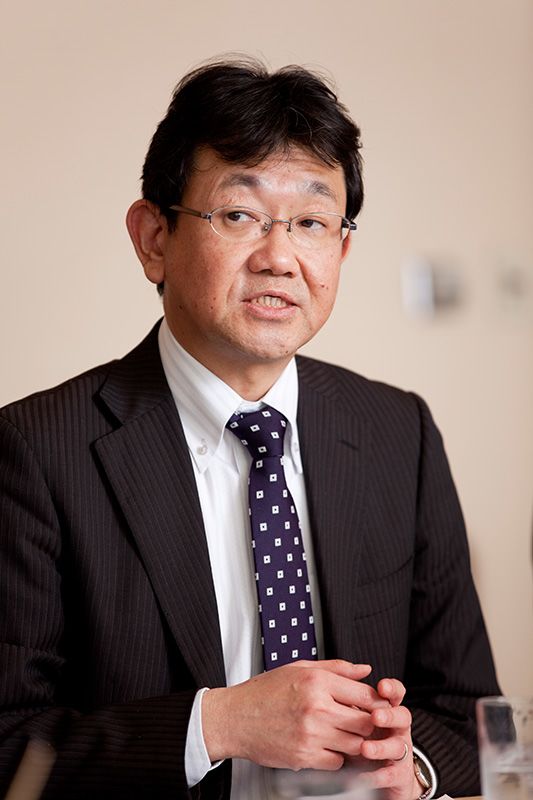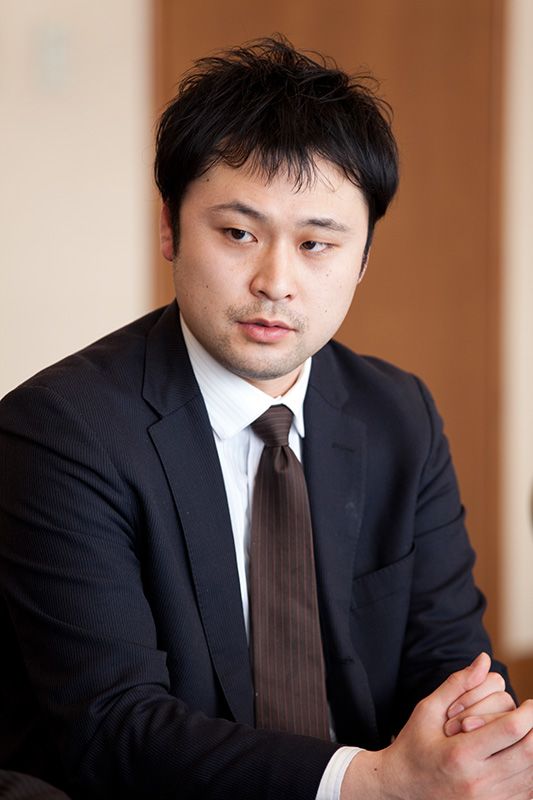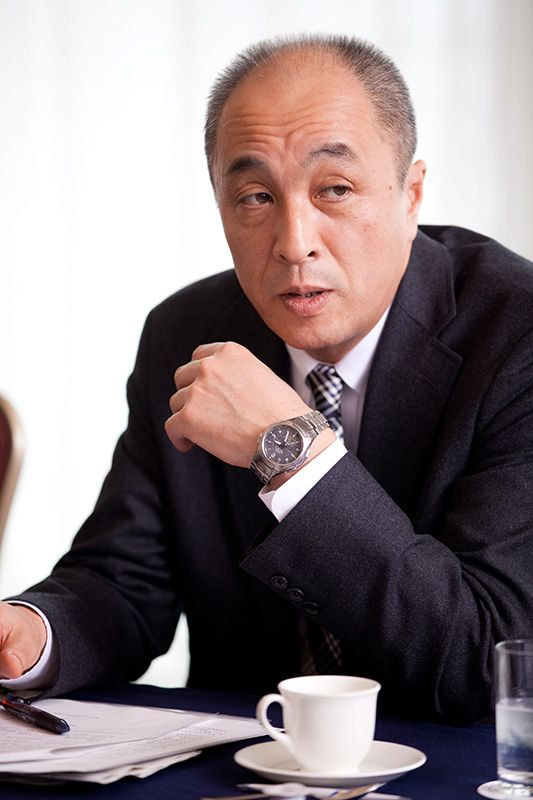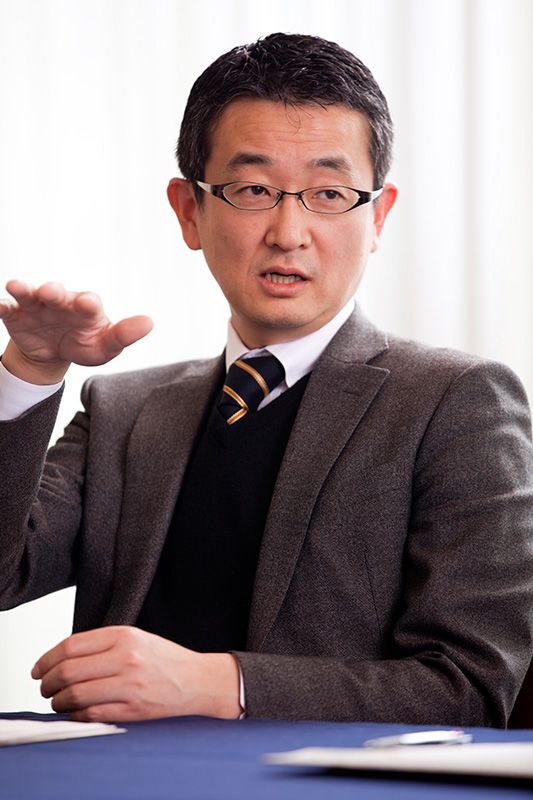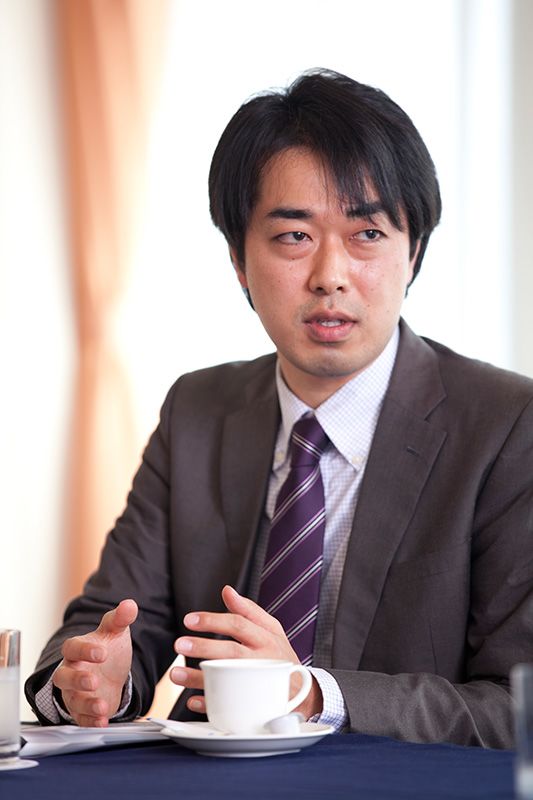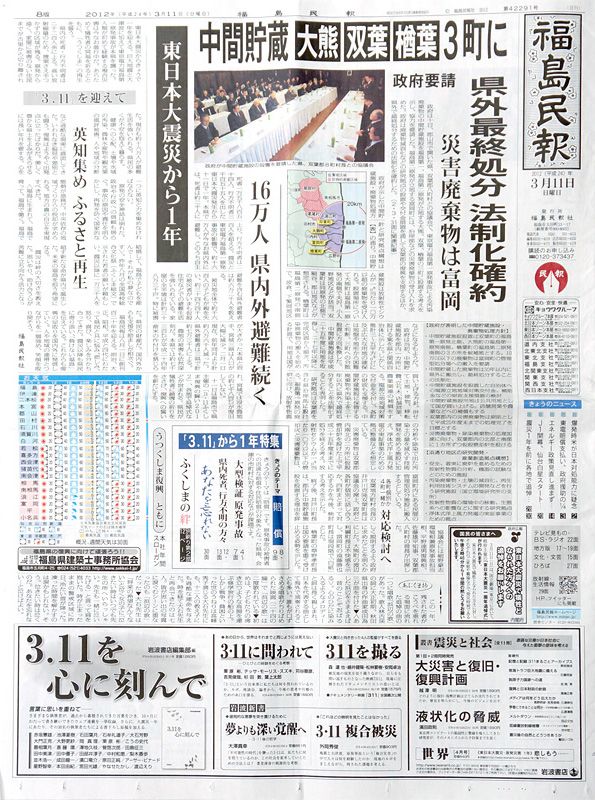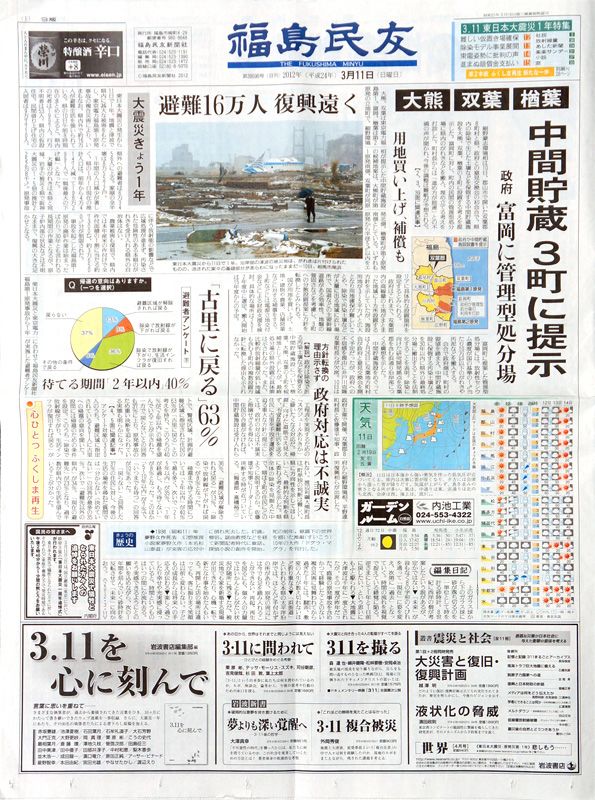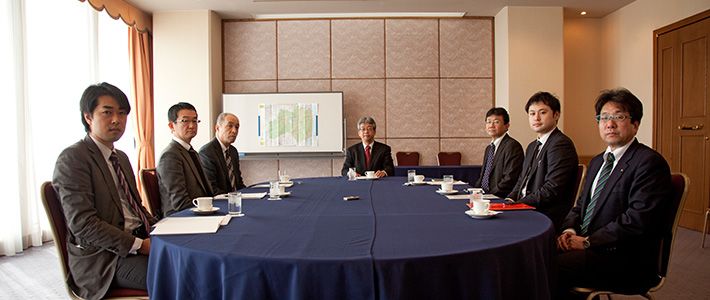
Life Goes On: A Visit to Fukushima, One Year Later
Local Media and Fukushima (Part One)
Society Lifestyle- English
- 日本語
- 简体字
- 繁體字
- Français
- Español
- العربية
- Русский
Hayakawa Masaya
Joined Fukushima Minpō Co. in 1984. Has been general manager of the news department since 2011.
Seto Eiji
Joined the Fukushima Min’yū Shimbun in 1983. Has been editorial bureau chief since 2009.
Gotō Yoshinori
Joined Fukushima Television Broadcasting in 1988. Has been news director since 2009.
Murakami Masanobu
Joined Fukushima Central Television in 2000. Has covered local government issues since 2008.
Hayakawa Gen’ichi
Joined Fukushima Broadcasting Co. in 1984. Has been news production manager since 2008.
Takano Hiroshi
Joined TV-U Fukushima in 2005. Has been a reporter in the news department since 2008.
Harano Jōji (Moderator)
Publisher, Nippon.com
Feelings of Isolation
HARANO JŌJI I understand this is the first time since the disaster that reporters from all four Fukushima TV stations and both the local newspapers have gathered together under the same roof. I’m looking forward to hearing your views. Let me start things off by asking each of you what you think the most pressing issue is in Fukushima right now?
HAYAKAWA MASAYA With the exception of the worst-hit coastal regions that bore the brunt of the tsunami, the situation in most of the prefecture is that things have pretty much returned to normal. On the surface, everything might seem to be back to the way it was before 3/11. But the reality is that people’s lives in Fukushima have changed completely. The nuclear crisis is still not resolved, and more than 160,000 people are still living in temporary housing throughout the prefecture. Even outside the evacuation zones, people are coping with a highly stressful situation, living their lives in an environment in which they are constantly exposed to unknown low levels of radiation. Many families have decided to leave the prefecture entirely. So for all these reasons, decontamination is the biggest issue for me—reducing radiation levels in the places where people live their lives. But nothing is being done. I think this is the biggest factor hobbling the recovery.
HAYAKAWA GEN’ICHI I don’t think there is any one issue I can point to as “the most important.” There are all kinds of different problems requiring attention, across a wide range of categories. The first one that springs to mind is the label that has been stuck on the whole of Fukushima Prefecture. Whenever I speak at partner TV stations [in other parts of Japan], I get a sense that people wish Fukushima would just clean up the mess itself. There was a lot of media publicity at the end of last year when the Chinese character “kizuna” [meaning close social ties] was chosen as the kanji that best summed up the year. But that’s not the sense we get in Fukushima at all. For all the talk of working together, the reality is that increasingly people seem to want to treat the situation as if it were a problem that affects Fukushima alone.
The Fading Interest of the Outside World
GOTŌ YOSHINORI The scale of this earthquake was so massive that just about everyone in the country was affected by it at first, no matter how far away they were. But now that a year has passed, this sense of involvement has declined rapidly in regions outside of Fukushima, and there is an increasing tendency to regard Fukushima as a special case. I feel a growing sense of frustration and desperation. Whenever I talk to people from outside the prefecture, I sense their wariness, a reluctance to get involved. People from other regions no longer feel that the problems here affect them directly. I’d say that is one of the biggest problems.
TAKANO HIROSHI I think the biggest problem has to be the shift in motivation. People are confronted by a whole range of problems in every aspect of their daily lives, and this is causing widespread unease and anxiety. Another problem is that there has not been enough cooperation with surrounding areas. In that sense, I think there is a need to do more to work together with people from outside the prefecture. On problems like radiation, there are limits to what Fukushima can do alone. My personal feeling is that local areas and the prefecture need to be proactive in getting the message out and work together to build support outside the prefecture.
SETO EIJI In terms of the everyday lives of people in Fukushima, I think the most pressing issue is decontamination. Clearing up the radiation is absolutely essential before anything else can happen, and I think the people of Fukushima want the government to do whatever it takes to get the situation back to the way it was before 3/11. Without thorough-going efforts to restore people’s physical comfort and peace of mind, the attitudes of outsiders toward Fukushima are never going to change. I think that would be a start.
HAYAKAWA MASAYA The thing that is distressing people the most is the problem of low level radiation exposure, a subject on which there is very little concrete scientific information. Apart from the obvious health concerns, another thing that makes this fear of radiation so dangerous is the effect it has of driving a wedge between people and regions. What will happen to the contaminated waste after the cleanup? If the risk to health is not clear, people will plan for a worst-case scenario. People outside Fukushima will end up saying “Don’t send that stuff here” and insist that the waste should be disposed of locally. And the reluctance of other prefectures to accept earthquake or tsunami rubble from Iwate and Miyagi makes me worry that this kind of fear of radiation exposure is starting to spread beyond Fukushima to other prefectures. If things go on like this, Fukushima will be isolated with no hope of recovery or rebuilding. When discussing the radiation problem, you need to not only consider the health impacts, but also the social dimension. This is something I have felt very strongly throughout the past year of media reporting on the issue.
The Unspoken Rule: Don’t Impose Your Values
HARANO What is the state of progress on work to remove radiation contamination at the moment?
HAYAKAWA GEN’ICHI Haphazard. The national government does nothing, despite the need to deal with this in a comprehensive fashion. This means that the city governments need to deal with it, but that doesn’t always happen either. That passes the responsibility down to the local district authorities. But sometimes they don’t do anything either. So in some places you end up with a situation in which housing projects, neighborhoods, and individuals are left to deal with the problem themselves in a piecemeal manner. Because of the lack of a unified clean-up plan, the problem is just being shifted from place to place, and the total levels of radiation are not decreasing at all.
HARANO To what extent would you say this is the result of government incompetence?
SETO The reality of the situation is that the Fukushima crisis needs to be dealt with as a crisis affecting the whole of Japan. But there is a constant call from the public, asking what on earth our politicians are doing. Sure, they have set up plenty of official bodies and organizations—the Reconstruction Agency and all that—but it’s clear from listening to the politicians and bureaucrats in Kasumigaseki that outside the ministries with immediate responsibility for the situation, people just aren’t that interested in Fukushima. What I want is for the central government to give the situation in Fukushima the attention it needs and deserves so that we can not only restore the situation we had before the disaster, but actually make things better, the way they did in Kobe after the Great Hanshin Earthquake in 1995.
TAKANO One effect of the radiation is that people have stopped coming here. I’m worried that if the evacuees don’t return, we’ll fall into a vicious spiral as more and more people start to move away. Although some people think the safety standards for radiation levels in agricultural products need to be eased, it is difficult to strike a balance between the local and nationwide perspectives in terms of deciding what an adequate standard would be.
Radiation Fears and the Impact on Local Agriculture
GOTŌ For me, the most symbolic event of all came when rice harvested in Fukushima in 2010 was returned as unfit for consumption—even though the rice was harvested before the nuclear accident even took place! We can write this off as the result of simple ignorance, but that’s the reality. Now, it may well be that some products do pose a threat to health. That’s why if Fukushima industries are going to survive we need to make a clear distinction between items that could possibly be irradiated to a harmful level, and mere idle speculation. Testing all agricultural products, for example, would let us know for certain if a particular shipment is safe. With statistical sampling, there is always the possibility at the back of your mind that something could slip through.
HAYAKAWA MASAYA But setting the standards at the right level is not easy. When the Ministry of Health, Labor, and Welfare announced more stringent standards for acceptable levels of radioactive cesium in food products earlier this year, the ministry explained that although the previous standards were already sufficient to ensure consumer safety, the new stricter standards would ensure “peace of mind” as well. Certainly, this might seem to be a case of “the stricter the better” from the consumer’s perspective. But the situation is different for producers, particularly with decontamination efforts currently stalled. There is a fear that they will no longer able to produce anything at all if the standards are tightened up. Fukushima is home to both producers and consumers. If the standards are set according to the perspective of Tokyo, which has only consumers, that excludes a whole group of people from society.
For example, I heard a story about a PTA meeting at an elementary school, where one of the mothers said that she wanted the school to stop using ingredients from Fukushima Prefecture in the children’s school lunches, despite the general rule that tries to use locally sourced ingredients as much as possible. Another mother from a farming family asked, “Why are the things we make no good, even though they are well within the required safety standards?” And an argument broke out.
Similar disagreements arise over the question of voluntary evacuation. People who chose to evacuate have been accused of “running away” by those who stayed behind. Conversely, people who have left accuse those who stayed of “neglecting their duty as parents.” These are pretty tiresome arguments. I also have people criticizing me for not giving black-and-white facts about the health effects of low level radiation exposure, but the fact is without adequate scientific knowledge it’s impossible to draw a line and say exactly what is safe and what isn’t. This is an issue where you have to be very careful when reporting.
GOTŌ I think that there is an unspoken rule among people in Fukushima “Don’t force your own opinions onto others.” This applies to radiation too. The decision whether to eat Fukushima rice or not is one that everyone has to make for themselves. It’s not an issue where you should try to bring others round to your own point of view one way or the other. This is an important rule for all of us to live by.
But we also need lines that outsiders can understand. We need safety standards that the majority can trust and accept, and soon. Until these lines are drawn, we will continue to have this silly talk of not accepting anything that doesn’t show a radiation reading of absolute zero.
Even Children Face Discrimination
MURAKAMI Even children who have moved to other prefectures are facing discrimination. When I talked to high school girls I was struck by how many of them were worried about whether they would be able to have children in the future. Many of them seemed to assume that they would never find a husband outside Fukushima. I think the local media really needs to do a better job of communicating the facts on issues like this.
HAYAKAWA MASAYA In the early days after the disaster everybody was full of praise for the stoic way the people of Tōhoku stood up to adversity. But the media tends to give a platform to whoever talks the loudest, or states their opinion most clearly. I’m not saying that those statements are necessarily wrong, but I don’t think that they give the full picture either. Right after the disaster plenty of Fukushima residents were absolutely furious at the president of the Tokyo Electric Power Company, and that was a pretty easy picture for the media to paint. It made an easy story for them. The problem comes when those views are taken as representative of everybody in the entire prefecture.
SETO For example, there were a lot of cases in which people who decided to leave their homes were featured in the local media in the places they had moved to as “evacuees from Fukushima.” These people obviously tended to talk about the unease that had led them to leave their homes. But when the outside media take that approach to the story, it conveys the impression that the whole of Fukushima Prefecture is some uninhabitable zone where everyone is going around in protective clothing. This tendency is especially pronounced in the mainstream mass media.
TAKANO I think it can be frustrating for people still living in Fukushima when there is this continual stream of reports featuring people who have chosen to leave, talking about the conditions back home and emphasizing how dangerous the situation is. I’ve lost count of how many times I’ve seen reports on the national news featuring someone who chose to leave and making it seem like the whole of Fukushima is a no-go area. Over and over we get the same phrases: “I can’t return to Fukushima, I can’t live there anymore.” I’ve had a lot of Fukushima residents complain to me about this kind of thing. It just sounds hollow to people who are still living here. Exaggerating the risks without good grounds just ends up hurting the feelings of people still living in Fukushima.
The Preconceptions Driving the Media’s Narrative
HARANO What are the responsibilities of the local media when a once-in-a-millennium disaster on the scale of last year’s strikes?
HAYAKAWA MASAYA I think the local media has a vital role to play in continuing to broadcast the latest facts and raising the issues. As time passed after the disaster and nuclear accident last year, and especially after the national government announced that the nuclear crisis had been “concluded,” there was a conspicuous drop in the levels of coverage of the situation by the Tokyo-based media. There’s a vague sense that people just want to regard the story as finished and move on. But, as I said earlier, cleanup operations in Fukushima are at a standstill, and the situation is pretty much unchanged from the way it was immediately after the disaster. How can you call this a “conclusion”? I think the local media has a duty to keep hammering away at the issues for as long as it takes.
SETO I struggled with the question of how the media should report on situations like this immediately after the disaster, when a whole range of calamities seemed to be taking place at once. Supply lines were cut off, gasoline and food supplies ground to a halt . . . and then, on top of everything, hydrogen explosions at the nuclear power plant. Of course the job of media should be to convey the facts in an impartial manner. But in fact there is a strong tendency to sensationalize everything instead. There are certainly things I regret now, looking back. For example, how many of us in the media knew anything about SPEEDI [System for Prediction of Environmental Emergency Dose Information] before it hit the news? Not many of us, I’m afraid. Even now readers often ask what the difference is between sieverts and becquerels. If we in the media are able to provide people throughout Japan with an accurate and accessible account of the facts about radiation, in a way that they can understand, I think they might start to see the Fukushima situation differently.
But when reporters from the mainstream Tokyo media come to Fukushima, they have a very limited amount of time at their disposal. Their reporting tends to stick closely to the trajectory of a preconceived narrative. By contrast, those of us in the local media have our reporters in the region all the time, and we are able to keep an eye on people’s lives and local developments on a daily basis. This means that the local media can maintain clear-eyed, honest reporting without being unduly swayed by politics. Honest, accurate reporting, based on a clear understanding of the needs of local people, is at the heart of what we in the local media are trying to achieve.
Tokyo Media and Local Media See Things Differently
HAYAKAWA MASAYA One example of the different perspectives came when cesium was detected at a water purification facility in Tokyo. I remember we all said at our company that the tone of the Tokyo media would change overnight as a result of that discovery. And we were right. Up till that point, the basic position had been to emphasize that there were “no immediate effects on health.” Suddenly, they shifted to writing critical pieces about food and water safety. It really brought home to me the different perspectives of the central and local media. Our role as the local media is to see things and reflect on developments from the perspective of the 1,980,000 people who remain in Fukushima, and speak up for their interests.
MURAKAMI In terms of different perspectives, I remember the impression I had when the Fukushima Daiichi Nuclear Power Plant was opened to the press for the first time in November, 2011. The event was organized by the press club attached to the Cabinet Office, with the local media also allowed to take part. But we had been inside the plant several times [prior to the accident], and tended to emphasize aspects likely to be interesting from the local perspective—how things had changed since the explosion, and so on. But the cabinet press club members all took a very predictable line. It was as though they were learning about the high radiation levels for the first time, even though the results of monitoring had already been made public. This only made people’s image of Fukushima even worse than ever. The levels of concern are different. On this subject, I’ve recently come to feel that we need to be more proactive in terms of communicating the facts to people overseas and the rest of the world. In that sense, I think this meeting is a valuable opportunity to communicate a sense of the local awareness of the issue to people overseas.
HARANO What about the foreign media?
Foreign Media Sensationalism
MURAKAMI Looking back, we at Fukushima Central Television were the only television channel in the world that captured video of the March 12 explosion at the unit 1 reactor and the March 14 explosion at unit 3. We noticed the first explosion and broadcast our footage of it, and told the major network Nippon Television that they should broadcast it nationally as a matter of priority. But they dragged their feet, claiming that they couldn’t broadcast footage of the explosion without knowing what it was. Here we had actual footage of the explosion as it took place: why on earth wouldn’t they broadcast it? They did finally broadcast the footage nationwide, and that may have prompted the Prime Minister’s office to take action, and finally got the government’s attention. At the time, it was the gulf between the country’s center and periphery that impressed me. It was in April that I became aware of the gap with other countries.
Our video of the explosion was shot from a distance of 17 kilometers, with no sound. But a news video produced by a German TV channel that was uploaded to Youtube and other websites had explosion sounds added. People in Japan who saw the video after it has been tampered with were outraged. They wanted to know: How come this one has sound? And if the video really has sound, why is Fukushima Central Television broadcasting it without sound? I suppose they must have processed the video to make the explosion seem more sensational, but their failure to clarify to the viewers which source was correct just invited confusion.
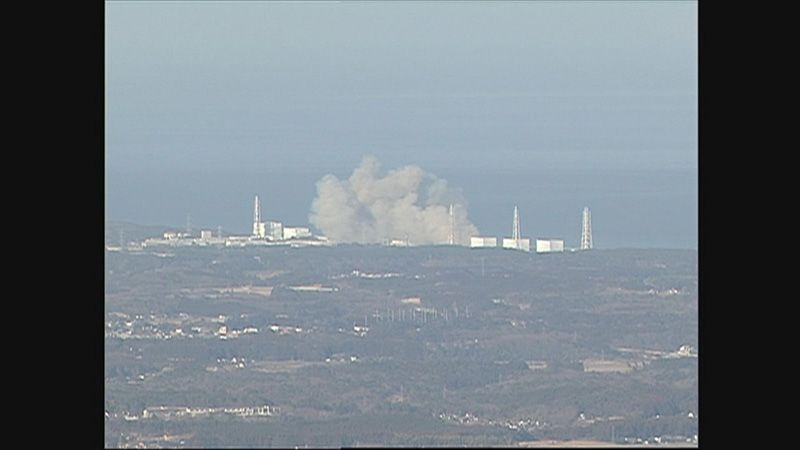 Image of hydrogen explosion at Fukushima Daiichi reactor number 1. (Photo: Fukushima Central Television)
Image of hydrogen explosion at Fukushima Daiichi reactor number 1. (Photo: Fukushima Central Television)
Reporters from abroad covering Fukushima have a different perspective. If they come across a child with a nosebleed, sore throat, or diarrhea, they just go right ahead and run the story without checking to see if there is any scientific basis for attributing these symptoms to radiation. Then we get criticized by people in Japan who have seen these reports in the foreign media and want to know why it is not being covered here. There’s a misunderstanding that the local media is obsessed with conveying the impression that everything is safe. But that’s not true—the reality is that we’re just trying to report the facts accurately. But when irresponsible reporting appears in the foreign or national media, they end up distorting our local coverage. Ultimately, it has the effect of eroding the trust that local residents have in us. It’s a depressing situation that’s been dragging on ever since the disaster happened.
Continued in part two.
(Translated from a March 1, 2012, discussion in Japanese. Photographs by Kawamoto Seiya.)
Great East Japan Earthquake tsunami Fukushima Radiation Evacuation nuclear power plant cesium Fukushima Minpo Fukushima Minyu Minyu Fukushima Television Fukushima Central Television FCT Fukushima Broadcasting Company KFB Television Yu Fukushima TV-U TUF radioactivity decontamination SPEEDI Unit one damage rumors Chugoku Shimbun microsievert local media
